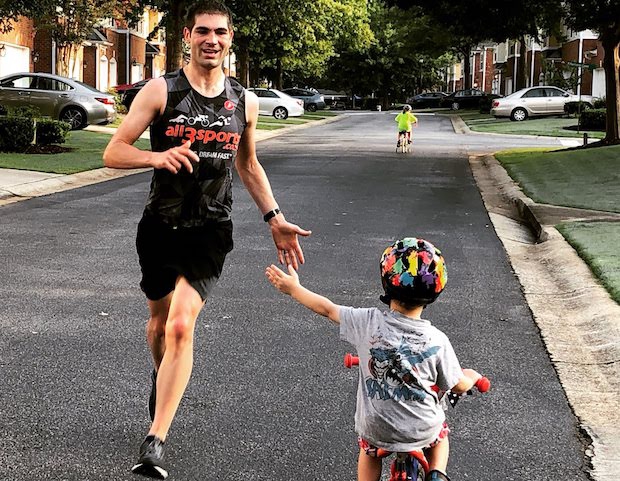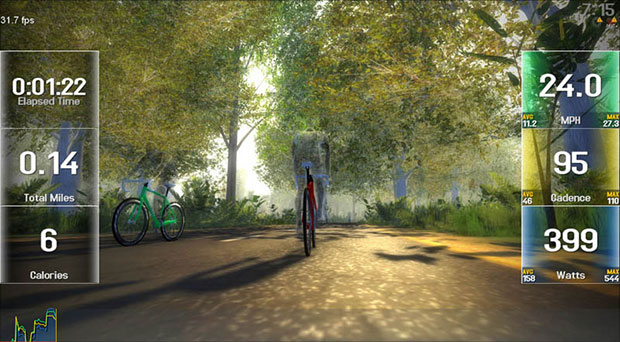Zwift Racing 101: Quick Start Guide
We here at Slowtwitch have talked a lot about the utility of Zwift as a training tool. From the details of when to use ERG mode to our weekly group rides and runs, we like to use Zwift a lot for events, workouts, or free-riding. There is, however, one area of Zwifting that we haven't done as much of a dive on.
Racing.
Well, it's time we changed that. This article specifically goes into bike racing on Zwift, what you should expect the first time you line up in the starting pen, and a little bit on the strategy of racing.

The Basics
In order to even find yourself in the starting pen, you first need to sign up for a race. You can do that through one of three ways: either by going to Zwift's event page, using the Zwift Companion app, or by selecting a race on the home screen once in the Zwift game application. Note that if you're looking for a race in advance, you're best going to be served by using one of the first two methods.
Almost all races are categorized into four groups, each assigned a letter corresponding to the group. They're typically broken down by translating your FTP into a watts per kilogram number (note: numbers below are for all gender races; women's only races occasionally have different parameters):
A: 4.0 w/KG and FTP above 250 watts
B: 3.2-3.9 w/KG and FTP above 200 watts
C: 2.5-3.1 w/KG and FTP above 150 watts
D: under 2.5 w/KG
Taking myself as an example, with an FTP of 308 watts but a body mass of 83.6 kilograms, I fit squarely into the B category of racers at 3.7 w/KG. Using the Companion App, I'll filter events to only show me races that feature the B category so that I can easily find one on courses that I like, or sit in a time where I have the opportunity to ride.
Once you have your race selected, it's time to get yourself into the starting pen. You can start cycling in the pen anywhere from 30 minutes prior to the race all the way until just before the clock hits all zeroes. For races with smaller numbers of participants, this may not make much of a difference. For larger ones, though, you'll want to arrive to the pen no later than 10 minutes before start time: your position in the corral is determined off of when you arrive. The sooner you're there, the closer to the front you are. That can make the difference of making the front group of the race or not.
With the final few seconds before the start: make sure you've got your fluids, your fans going, and you're ready to go.
Racing Tactics
The start is a sprint. Depending on the course, the opening effort to create a front group will last anywhere from 30 seconds to 5 minutes. You need to be up to full power when the clock hits zero; if you wait until zero to get up to speed, you will be left behind. In general, the highest five minutes of power for your race will be right here.
Mixed category starts are harder. The races that see ABCD all start at once are, in my opinion, the hardest starting races period. This is particularly true if you're a B, C, or D rider, as people will try like hell to latch onto the A groups. Looking for a slightly mellower start? Look for races that have staggered starts, where each category starts together.
Every hill is an attack point. Don't think that we're talking about big climbs, like the KOMs. Anything over three percent grade is going to see the effort of the group lifted. Expect that you'll need to go as hard as you can in order to try to stay in the group.
Use the draft to your advantage. Drafting in Zwift is incredibly important. Being able to get a rest in the group before one of those attack points is crucial to your success. On average, you'll be about 0.5w/KG lower in effort by sitting in versus being on the front. The draft is also useful to help slingshot yourself up a hill; set yourself about mid-pack going into the climb, then raise your effort — you'll usually get more speed heading up. Time it well with a power-up and you might just find yourself off the front.

Time your power-ups wisely. Most, but not all, races allow the use of power-ups. Depending on which power-up you have will dictate when you should use it; for instance, never use a featherweight on a flat or downhill. For a full breakdown on when you should use selected power-ups, check out this guide from Zwift.
Every race comes down to the sprint. It's very rare for a breakaway to actually work in Zwift, which means that the real work will come down to the final 500 meters. Knowing this, plan your attack accordingly by sitting back in the draft and use whatever power-up you've got to try to make it work. Just know this: once you commit to the attack, you've got to make it work through the finish line.
Sift out the sandbaggers. It's an unfortunate fact of Zwift life: people will choose to race in lower categories than they should. It's not unheard of to see people who should be racing A in the C or D category because "they're doing an easy ride" and blow everyone out of the water. If you want to check out the "true" category results after a race, sign yourself up for ZwiftPower.
Congratulations! You've attacked your first Zwift race. In our next installment, we'll take a deeper look at picking races that suit how you ride, as well as how equipment choices can influence performance.




